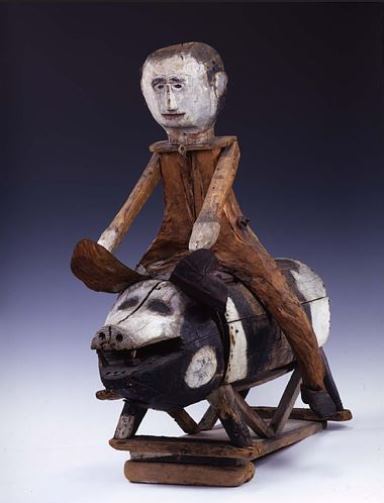…that in the 1890s Clark Coe created an attraction of life-sized moving figures called the Killingworth Images on his farm on Green Hill Road.

Man on Hog by Clark Coe – Smithsonian American Art Museum, Gift of Herbert Waide Hemphill
Coe’s mechanical figures of people and animals, known as automata, were thought to have originally been built to amuse his grandchildren. Using a dam and waterwheel, Coe constructed eccentric mechanisms to power his figures’ movement. Built from old barrel staves, driftwood, tree trunks, discarded clothing, ribbons, and pieces of metal, the figures moved at all hours of the day and night—creating quite the spectacle and drawing visitors from across the country. A 1906 article in the Los Angeles Herald describes 8 figures covering a space of 25 feet. The figures painted and costumed by Coe included two boys teetering on a board, an old man sawing wood, a musician with a lute, a mother rocking an infant in a cradle, 22 small dolls riding a Ferris wheel, a man riding a runaway hog, and, according to one news report, “Mammy” beating time to her husband’s fiddle. (The mammy image is a racial caricature that appeared frequently in popular culture prior to the Civil Rights era.)
The Killingworth Images were in place on the Killingworth site until the early 1920s. Clark Coe died in 1919. Today, his work is held in the collections of the American Folk Art Museum in New York City and the Smithsonian American Art Museum in Washington, DC.









